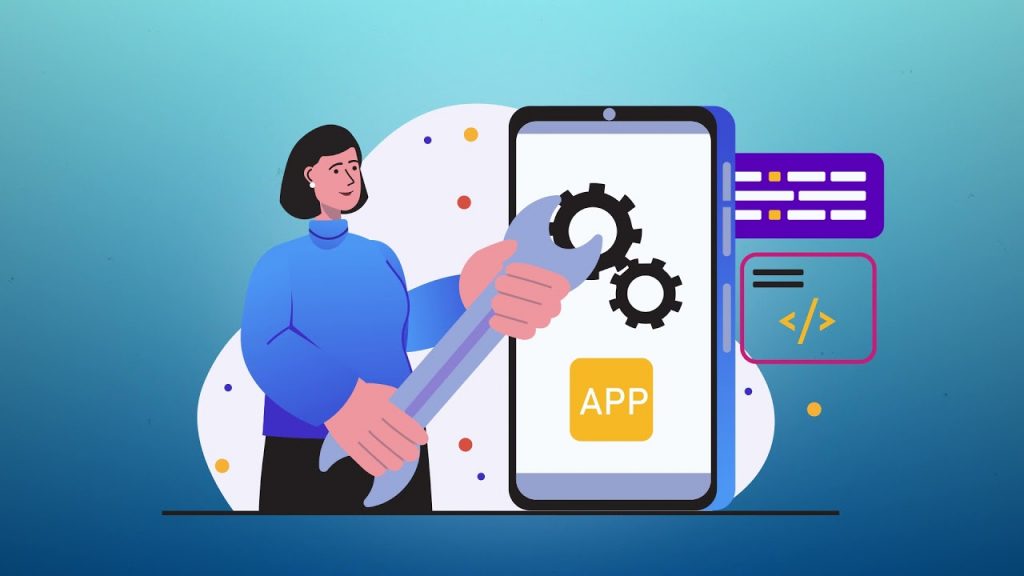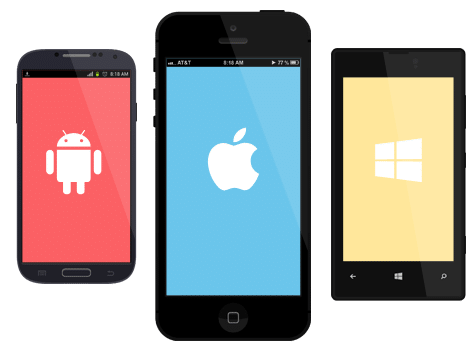
I. Introduction
Dive into the dynamic world of mobile development that has transformed business-user interactions. Explore the latest exciting technology trends, such as artificial intelligence and augmented reality, revolutionizing the way businesses interact with their audiences. Discover how these advances have reshaped business models, opening new avenues of engagement and profitability.
Explore fascinating case studies, success stories of companies that have used mobile development to reinvent their presence on the market. Discover how these advancements are transforming the way users interact with brands, opening new growth opportunities, and reinventing user experiences.
Get ready for a captivating journey through the different facets of mobile development. In addition to discovering the latest trends, you'll explore practical tips for staying ahead in this dynamic field. Dive into agile strategies, tips for maximizing personalization, and approaches to delivering memorable user experiences. It’s an invitation to understand the rapid evolution of mobile development and take advantage of it for optimal success.
Lire : De Pixels à Profits : La Maîtrise du Développement Mobile
II. Summary of Major Technological Advances

A. Technology and Innovation: Evolution of key technologies (AI, augmented reality, IoT)
Artificial Intelligence (AI):
AI is revolutionizing mobile development by delivering advanced capabilities, from behavior-based personalization to task automation. Explore machine learning tools and open-source libraries that enable developers to integrate AI into applications, offering guidance on how to use these features to improve performance and user engagement.
Augmented Reality (AR):
AR opens doors to immersive experiences. Dive into AR use cases, from games to business applications, highlighting tools and platforms for creating interactive content. Also explore best practices for effective integration of AR in mobile app development.
Internet of Things (IoT):
IoT is transforming mobile device connectivity, opening opportunities for interconnected intelligent applications. Explore IoT communication protocols, security challenges, and emerging applications, providing recommendations for developing applications that fully leverage this connectivity to deliver practical and innovative solutions.
B. Current state of progress in mobile development
Progressive Web Apps (PWA):
PWAs provide a hybrid experience between websites and mobile apps, allowing for quick navigation and offline use. Their growing adoption is based on the ability to offer an experience close to that of native applications, without requiring installation. Practical tips for developers on implementing PWAs, including optimizing for high performance and ensuring a frictionless user experience.
Location-based applications (Beacon Technology):
Beacon technology enables interactions based on physical proximity, paving the way for personalized experiences based on location. The guidance would include approaches to effectively use Bluetooth signals for pop-up notifications, location guides, and personalized offers while respecting user privacy.
Cross-Platform Application Development:
Cross-platform development frameworks are increasingly popular for their ability to reduce development costs and accelerate application deployment across multiple platforms. Practical tips on choosing the right framework based on specific project needs, strategies for maintaining visual and performance consistency across different platforms.
Enhanced Security and Privacy Protection:
Current advancements include stricter security standards and enhanced privacy measures. Guidance for developers on how to implement robust security features, including data encryption, two-factor authentication, and secure handling of sensitive data.
C. Role of major operating system updates in mobile innovation
Introduction to Major Updates:
Think of major operating system updates as technological feasts: a rich buffet of new features, improved performance and enhanced security measures. They are redefining the mobile development landscape, providing new opportunities for applications.
Impact on Application Development:
These updates represent the developers' innovation laboratory. They unveil new APIs, powerful features and performance improvements. Imagine developers as artists, using these new canvases to create more immersive and engaging experiences for users.
Adaptation and Optimization:
Like modern alchemists, developers adapt to these new developments. They transform their applications to take full advantage of new features, adjusting, optimizing and tweaking to deliver top-notch performance.
Security and Privacy:
These updates strengthen the fortress of mobile security. They incorporate new locks and reinforced virtual guardians to protect user data, providing peace of mind for everyone.
Backwards Compatibility Considerations:
Like talent jugglers, developers juggle between the new and the old. They ensure that their applications continue to dance harmoniously to the old versions while providing a masked ball experience, revealing the wonders of the new ones for those who have adorned themselves with the latest finery.
III. Development Frameworks and Emerging Tools

A. Exploring burgeoning development frameworks (React Native, Flutter, Xamarin)
- React Native : Ce cadre offre un terrain de jeu infini aux développeurs. Grâce à sa flexibilité et à son approche « écrivez une fois, utilisez partout », il permet de créer des applications mobiles pour iOS et Android en un clin d’œil. Imaginez un univers de composants préfabriqués pour construire des interfaces époustouflantes.
- Flutter: It’s like a magic paint palette for developers. With Flutter, ideas come to life in an instant. Its interactive widgets allow each change to be visualized in real time, providing artistic freedom to create striking designs and immersive user experiences.
- Xamarin: A blank canvas for expression. Xamarin, with its C# language, allows you to weave applications for iOS and Android while harmoniously sharing code. It’s like a symphony where every note is perfect, offering robust and harmonious applications.
B. Innovative development tools and platforms (Kotlin, Swift, Firebase)
- Kotlin : L’épopée du développement Android se réinvente avec Kotlin. C’est comme une baguette magique pour les développeurs, offrant une simplicité éblouissante et une sécurité inégalée. La danse entre Kotlin et le code Java existant ouvre la voie à des applications Android d’une élégance enchanteresse.
- Swift : Le conte de fées d’Apple. Swift, avec sa rapidité et sa clarté, ouvre un monde de possibilités pour les créateurs d’applications iOS. C’est comme un véritable joyau dans le royaume des langages de programmation, offrant une expérience de codage magique et sûre.
- Firebase: The rainbow of innovation. Google's Firebase offers a wealth of features to make life easier for developers. Authentication, storage, real-time databases, it's like a chest full of treasures for brilliant and interactive applications.
These tools and frameworks are like magic potions for developers, offering endless possibilities for creating captivating applications and enchanting user experiences.
IV. Key Trends and Current Adoption

A. In-depth analysis of emerging trends: conversational applications, low-code/no-code development
- Conversational Applications: Explore the conversational interface revolution. Understand how chatbots are transforming user experience, providing instant support, personalized recommendations and rapid problem resolution. Dive into the nuances of implementing chatbots and voice assistants to deliver seamless, natural interactions.
- Low-code/no-code development: Dive into the world of no-code and minimal-code development. Provide examples of low-code/no-code platforms, describe how they work, and offer practical tips for maximizing their potential. Explain how these tools lower the barriers to entry for application development, while highlighting their potential limitations.
B. Use cases and growing adoption of emerging technologies
- Conversational applications in e-commerce: Dive into specific case studies of e-commerce integrating chatbots to improve the customer experience. Offer advice on designing and implementing chatbots to improve customer engagement and maximize conversions.
- Low-code/no-code development in SMBs: Analyze how small and medium-sized businesses leverage low-code/no-code tools to build custom applications. Offer practical recommendations for selecting the right platform and maximizing operational efficiency.
By offering practical details, real-world use cases and implementation tips, this content will provide readers with in-depth insight into current trends and best practices for making the most of these technological developments.
V. Impact of Advances on Businesses and Business Models
A. Digital transformation of businesses through mobile development
- Business Expansion with Mobile Apps: Mobile apps are much more than interactive interfaces. They are the central pivot of the customer experience. By offering personalized features, simplified shopping and instant communication, these apps are redefining customer-business interaction. Strategies such as personalizing offers or integrating chatbots improve customer engagement, promote loyalty and drive sales.
- Internal Process Optimization: Businesses leverage mobile development to streamline their internal operations. Dedicated applications optimize team communication, automate recurring tasks and provide instant access to crucial information. These advances promote operational agility, reduce bottlenecks, and improve overall business responsiveness.
B. Impacts on traditional and emerging economic models
- Impact on traditional models: The mobile evolution has forced traditional businesses to rethink their approach. To remain competitive, they have had to adjust their distribution channels, rethink their mobile marketing strategies, and adapt their services to meet the changing needs of mobile consumers. Initiatives such as loyalty applications or personalized mobile customer journeys have been pivotal to success.
- Emergence of new business models: The advent of mobile has given rise to new innovative business models. Companies have adopted subscription models, launched on-demand services or created resource sharing platforms. These strategies have enabled diversification of revenue sources and opened up innovative collaboration opportunities, promoting sustainable growth.
By illustrating these aspects with real-world case studies and tips on best practices for mobile development and digital transformation, this content will provide readers with in-depth perspectives on how mobile development impacts business strategy and business redefinition. economic models.
VI. Future Outlook and Emerging Trends
A. Projections for the future: voice, blockchain, virtual reality
- Voice: The emergence of voice interfaces will redefine the user experience. With more sophisticated voice assistants and intuitive voice commands, apps will deliver more natural interaction, simplifying tasks, improving accessibility for all users, and opening new possibilities for customer service apps.
- Blockchain : L’intégration de la blockchain dans le développement mobile renforcera la sécurité, la transparence et la fiabilité des transactions. Les applications exploitant cette technologie offriront des transactions sécurisées, des contrats intelligents et une gestion décentralisée des données, garantissant la confidentialité des utilisateurs et leur confiance dans les applications mobiles.
- Virtual Reality: The advent of virtual reality in mobile applications will create immersive experiences. From entertainment to education to commerce, this technology will provide opportunities for highly immersive interactions, allowing users to explore, learn and interact in innovative ways.
B. Anticipated impact of these trends on mobile development
- User experience revolution: Integrating voice into mobile applications will revolutionize the user experience, providing smoother interactions. Developers will need to focus on optimizing voice interfaces, understanding context, and personalization to meet high user expectations.
- Increased security and reliability: Blockchain integration will require increased security expertise. Developers will need to ensure a robust blockchain implementation to ensure data privacy, while providing seamless user experiences.
- Innovation in design: The adoption of virtual reality will require innovative design. Developers will need to rethink user interfaces to deliver immersive and intuitive experiences, while ensuring optimal performance on mobile devices.
By anticipating these trends and preparing to meet the challenges associated with their integration, companies will be able to capitalize on these advances to deliver unique and secure user experiences, thereby strengthening their competitive advantage in the mobile market.
VII. Conclusion
In conclusion, diving into the future of mobile development is an unavoidable necessity to remain competitive in the ever-changing digital landscape. Technology trends such as AI, AR and IoT are opening up exciting new perspectives, providing unique opportunities to create innovative and differentiated user experiences. The tips on PWAs, Beacons, and cross-platform development in this article serve as a compass, guiding developers toward a successful transformation. By embracing these advancements, mobile development professionals can not only stay at the forefront of the industry, but also actively shape the technology landscape of tomorrow. Let's move now towards a future where collaboration between humans and technology redefines the standards of mobile, creating revolutionary user experiences.


